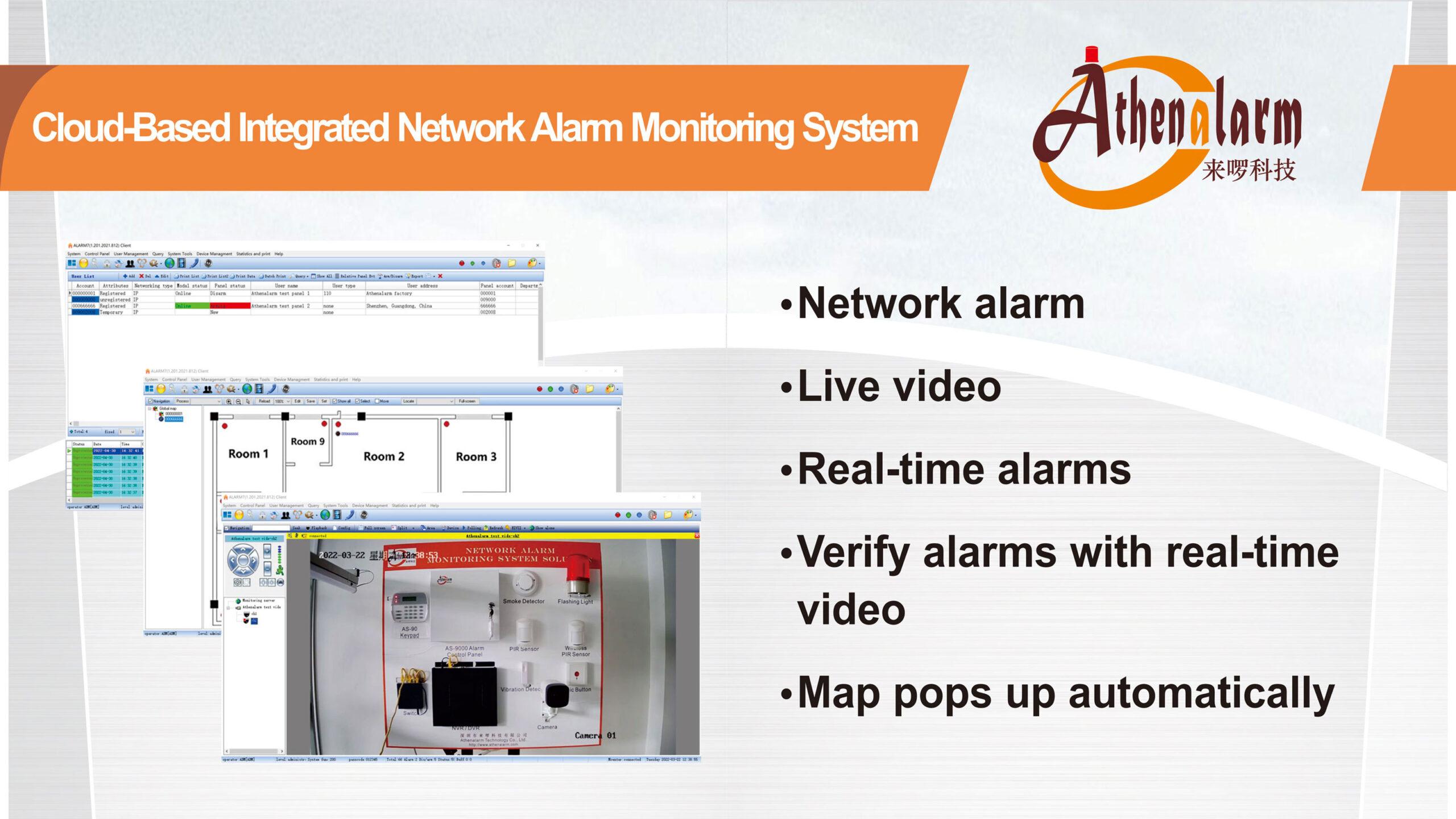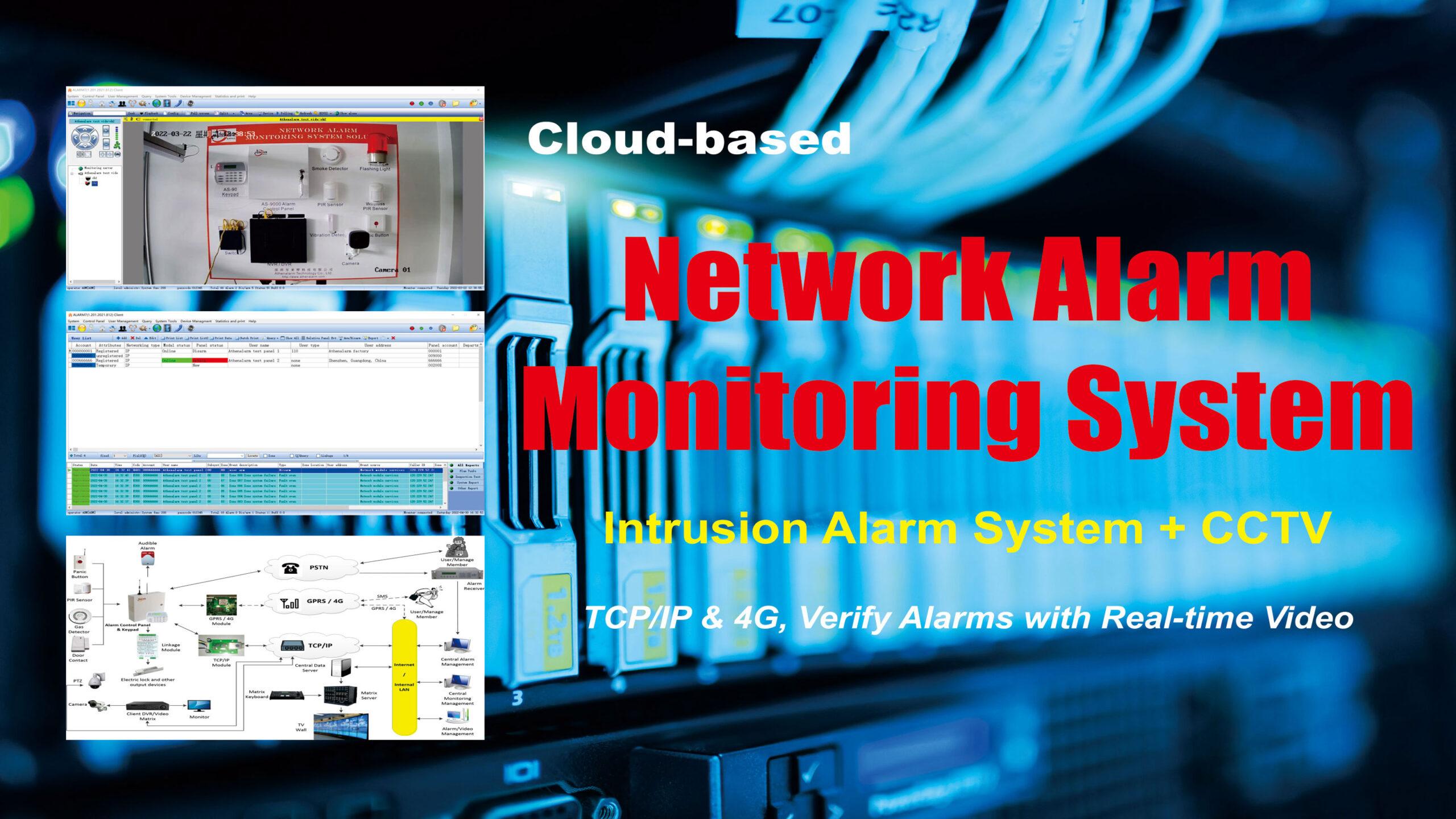



Analysis of Burglar Alarm Technology
1 Detectors determine the advantages of burglar alarm systems
At present, burglar alarm systems are mainly used for intrusion detection, that is, by installing various types of detectors (such as active infrared, passive infrared, microwave, door and window magnetic switch, emergency button, glass breakage, etc.), according to pre-set rules, to detect whether there is abnormal intrusion in the protected area. When abnormal intrusion is detected, the alarm control panel will issue a voice, sound, and light warning, and display the location of the alarm area. The network burglar alarm system will also notify users or alarm monitoring centers of the alarm signal through landlines, IP broadband networks, or wireless mobile networks.
Among the detectors that can be connected to burglar alarm systems, infrared is currently one of the most important detection methods. In today’s world where the demand for diversified detection applications continues to emerge and the structure of building environments is becoming increasingly complex. In addition to installation technology, burglar alarm systems have become an indicator of whether the system has a beneficial advantage in the development of detection technology. We can examine the application and development of the following detection technologies.
Firstly, the most widely used and widely used type is infrared detectors. Infrared detectors are divided into active (AIR) and passive (PIR). Active infrared detector is generally used for perimeter protection in areas, because it has a luminous device that actively emits a beam of light, and the beam is straight and only alarms when it is interrupted. Passive infrared detector relies on detecting 10-12μm infrared radiation emissions from the human body. The infrared radiation is detected and an alarm is triggered. Because under normal circumstances, the outdoor temperature difference varies greatly and the heat source interferes a lot, most passive infrared detectors can only be used indoors or in specific areas. In addition, infrared detectors also have the following ten false alarm factors related to the quality of burglar alarm detection systems:
- Poor anti-interference ability of RFI & EMI radio frequencies, resulting in adjacent frequency interference.
- Inaccurate judgment of personnel intrusion behavior.
- Affected by environmental temperature and strong light.
- The alarm control panel and detector have duplicate codes due to multiple configurations.
- The appearance design of the transparent cover is poor.
- Internal lighting component design angle error.
- The installation method of the infrared detector is incorrect.
- Multiple detection technology application errors cause mutual interference.
- Poor production process and operational errors resulting in false alarms.
- Detection distance, range, temperature compensation, sensitivity setting error or poor matching.
Sensitivity and false alarm rate have always been a contradiction that burglar alarms must face. Due to the increased sensitivity of the burglar alarms, the false alarm rate often increases. Therefore, many manufacturers have made improvements to this. As can be seen from the above, the possibility of false alarms in infrared detectors is mostly related to the design and manufacturing capabilities of the product itself. Therefore, the selection of product performance is the first crucial threshold for reducing false alarm rates.
2 Improvement of alarm control panel and control technology
After years of development, the burglar alarm system has entered a mature stage. The miniaturization and refinement of the product appearance can no longer meet the needs of customers. The diversification of its functions and the stability of its performance are receiving increasing attention. For example, intrusion detection requires quick response to immediate intrusion events, otherwise it may cause significant losses. Therefore, excellent burglar alarms should find a balance between performance and reliability. In terms of detection technology, the dual or triple detection technology of “infrared + XX” can be used to minimize the false alarm rate. In addition, if embedded MCU or microprocessor CPU technology is added to the alarm control panel, it can improve the functionality of the alarm control panel to more diverse interface requirements.
In terms of control technology, refined and simplified control operations and remote mobile interface have become an inevitable trend. With different access interfaces, the keypad is no longer just a rigid keypad. The alarm control panel and keypad have also made significant improvements in their intrusion and damage prevention mechanisms. It can be seen that the combination of password lock cover and other designs, as well as the emphasis on anti riot and weather resistance in the appearance material structure, all highlight the technological advancement of the overall burglar alarm system.
3 Humanization of burglar alarm system development
With the significant improvement of people’s living standards, in practical life, the technology of burglar alarm systems can also be applied to provide personalized medical alarm services.
In response to the development trend of national aging, some manufacturers have launched remote medical care response system solutions. Through the LCD screen, panic buttons, call buttons, and other functions of the alarm control panel, users can directly communicate with the alarm monitoring center or family members without the need for a phone call after pressing the button. The system can also instantly detect user information such as falls and activities, and has various event voice reminders such as timed medication reminders. In addition, the latest alarm control panel can also be equipped with various Bluetooth medical devices such as electrocardiogram monitors, blood glucose meters, blood pressure meters, and weight meters, which are equipped with Bluetooth technology according to the different needs of users. It can instantly detect the physiological conditions of users such as blood sugar and electrocardiogram, and transmit the physiological information of users (electrocardiogram, blood sugar, blood pressure) to remote medical personnel for home care through the alarm control panel.
4 Integration and application of burglar alarm system
Integration is a major development trend in security systems, and burglar alarm systems are no exception. In fact, the integration of burglar alarm systems with other security subsystems, such as video surveillance and access systems is not new. In recent years, due to its gradual expansion into residential and community applications, it has also begun to integrate with smart homes, but these are only the simplest and most basic integrations. In addition, it can also achieve linkage between burglar alarm system and video surveillance system. When abnormal situations occur, alarm video linkage is executed through a pre-set linkage method to achieve real-time video play, recording, playback, and other functions. Alarm software integration is a key focus of integration between various burglar alarm subsystems. The current key point in the integration of various systems is how to solve the interaction and processing of information between them.
Besides, the recent requirement for burglar alarm integration is to achieve the coexistence of multiple network alarm methods. The burglar alarm networking has a confusing meaning, which is to mix the networking between the alarm control panel and the alarm monitoring center with the networking between the detector and the alarm control panel. In fact, the alarm networking methods include wired and wireless, such as landline, broadband or wireless GSM, 3G, 4G and other mobile networks for networking. The networking between the detector and the alarm control panel is a dedicated wireless frequency, not a wireless platform provided by mobile communication operators. In terms of importance, the networking between the alarm control panel and the alarm monitoring center is the key to system integration. In recent years, with the prevalence of IP networks, many alarm control panel manufacturers have also begun to use wired or wireless IP network networking methods. However, in reality, due to the closed usage environment and the use of TCP/IP for networking, the application scope has not yet grown significantly.
